Hologram Interferometry Measure
Hologram Interferometry different object light is recorded at a different time, in a space with a hologram dry plate, and then using holography wavefront reproducing principle of non-contact manner on the surface of the object three-dimensional hologram measurement information obtained. Hologram Interferometry is an important aspect of the holographic applications can achieve high precision non-contact non-destructive measurement has many advantages than the general optical interferometry.

Usually optical measurement can only be measured relatively simple shape, parts of a high surface brightness, the holographic measurement methods can be of arbitrary shape, optionally the roughened surface of the object measured, to measure the order of magnitude of the accuracy of the wavelength of light λ. Currently, hologram interferometry has developed real-time holographic interferometry (single exposure method) method, double-exposure holographic interferometry, time-average holographic interferometry, dual wavelength interferometry and double pulse stroboscopic holographic interferometry.

Iin addition to , JALeendertz opened the hologram Interferometry another new branch - laser speckle cytometry. With the rapid development of photovoltaic technology, computer technology, CCD devices and fiber optic technology, the hologram interferometry technology in the collection and processing of information is more convenient, fast and reliable, and can be timing measurements of certain physical quantities in harsh environmental conditions . Coupled with phase-shift technology, heterodyne and phase lock technology, the measurement accuracy can be increased to λ/100 or higher.
Hologram interferometry in the 1980s, the United States and other advanced countries in the West have been the industrialization of our research projects through the identification of several universities and research institutes in the early 1980s, some of which reached the advanced level. After recent years of research and development, in holographic interferometry measurement test equipment development:
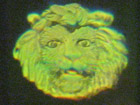
(1) is used to test rocket engines spray characteristics YSCI ionic transient laser hologram tester;
(2) for laser thermonuclear fusion dense plasma electron density measurements quarters amplitude picosecond UV laser hologram detector;
(3) including recording, reproduction, image processing the three parts transient laser holographic interferometry test system;
(4) for the displacement prosecution side of the laser holographic grating precision test system commonly used in aviation, aerospace, petrochemical, and other departments of the diaphragm. The U.S. and Germany have developed a quality recording media JunZi laser hologram interferometry measurement equipment.

Hologram interferometry and computer image processing technology combined with the emergence of optoelectronic image sensor, a large aperture area CCD devices and miniaturized pulsed solid-state lasers and other advanced equipment, the development of a systematic, intelligent, miniaturized holographic interferometry The device will be the development direction of the future hologram interferometry.

History of Hologram
Holography dates from 1947 , when British (native of Hungary) scientist Dennis Gabor developed the theory of holography while working to improve the resolution of an electron microscope.Gabor coined the term hologram from the Greek words holos, meaning "whole," and gramma, meaning "message". Further development in the field was stymied during the next decade because light sources available at the time were not truly "coherent" (monochromatic or one-color, from a single point, and of a single wavelength).
|

Dr. Dennis Gabor |
This barrier was overcome in 1960 by Russian scientists N. Bassov and A. Prokhorov and American scientist Charles Towns with the invention of the laser, whose pure, intense light was ideal for making holograms.
In that year the pulsed-ruby laser was developed by Dr. T.H. Maimam . This laser system (unlike the continuous wave laser normally used in holography) emits a very powerful burst of light that lasts only a few nanoseconds (a billionth of a second). It effectively freezes movement and makes it possible to produce holograms of high-speed events, such as a bullet in flight, and of living subjects. The first hologram of a person was made in 1967 , paving the way for a specialized application of holography: pulsed holographic portraiture. |
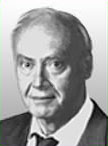 |
In 1962 Emmett Leith and Juris Upatnieks of the University of Michigan recognized from their work in side-reading radar that holography could be used as a 3-D visual medium. In 1962 they read Gabor's paper and "simply out of curiosity" decided to duplicate Gabor's technique using the laser and an "off-axis" technique borrowed from their work in the development of side-reading radar. The result was the first laser transmission hologram of 3-D objects (a toy train and bird). These transmission holograms produced images with clarity and realistic depth but required laser light to view the holographic image. |
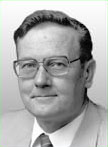 |
Their pioneering work led to standardization of the equipment used to make holograms. Today, thousands of laboratories and studios possess the necessary equipment: a continuous wave laser, optical devices (lens, mirrors and beam splitters) for directing laser light, a film holder and an isolation table on which exposures are made. Stability is absolutely essential because movement as small as a quarter wave- length of light during exposures of a few minutes or even seconds can completely spoil a hologram. The basic off-axis technique that Leith and Upatnieks developed is still the staple of holographic methodology.
Also in 1962 Dr. Yuri N. Denisyuk from Russia combined holography with 1908 Nobel Laureate Gabriel Lippmann's work in natural color photography. Denisyuk's approach produced a white-light reflection hologram which, for the first time, could be viewed in light from an ordinary incandescent light bulb. |
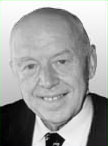 |
Another major advance in display holography occurred in 1968 when Dr. Stephen A. Benton invented white-light transmission holography while researching holographic television at Polaroid Research Laboratories. This type of hologram can be viewed in ordinary white light creating a "rainbow" image from the seven colors which make up white light. The depth and brilliance of the image and its rainbow spectrum soon attracted artists who adapted this technique to their work and brought holography further into public awareness.
Benton's invention is particularly significant because it made possible mass production of holograms using an embossing technique. These holograms are "printed" by stamping the interference pattern onto plastic. The resulting hologram can be duplicated millions of times for a few cents apiece. Consequently, embossed holograms are now being used by the publishing, advertising, and banking industries.
|
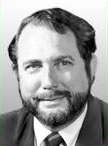 |
In 1972 Lloyd Cross developed the integral hologram by combining white-light transmission holography with conventional cinematography to produce moving 3-dimensional images. Sequential frames of 2-D motion-picture footage of a rotating subject are recorded on holographic film. When viewed, the composite images are synthesized by the human brain as a 3-D image.
In 70's Victor Komar and his colleagues at the All-Union Cinema and Photographic Research Institute (NIFKI) in Russia, developed a prototype for a projected holographic movie. Images were recorded with a pulsed holographic camera. The developed film was projected onto a holographic screen that focused the dimensional image out to several points in the audience.
Holographic artists have greatly increased their technical knowledge of the discipline and now contribute to the technology as well as the creative process. The art form has become international, with major exhibitions being held throughout the world. |
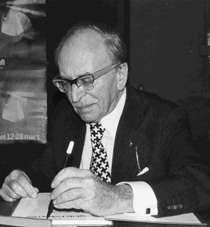 |
|
![]() English
English ![]() French
French ![]() German
German ![]() Spanish
Spanish ![]() Portuguese
Portuguese ![]() Italian
Italian ![]() Russian
Russian ![]() Romanian
Romanian ![]() Bulgarian
Bulgarian ![]() Hungarian
Hungarian ![]() Czech
Czech ![]() Danish
Danish ![]() Suomi
Suomi ![]() Turkish
Turkish![]() Swedish
Swedish![]() Norwegian
Norwegian![]() Slovenian
Slovenian ![]() Polish
Polish![]() Croatian
Croatian ![]() Slovak
Slovak ![]() Maltese
Maltese ![]() Lithuanian
Lithuanian![]() Latvian
Latvian![]() Slovak
Slovak ![]() Afrikaans
Afrikaans ![]() Arabic
Arabic ![]() Chinese(S)
Chinese(S) ![]() Chinese(T)
Chinese(T) ![]() Japanese
Japanese ![]() Korean
Korean ![]() Vietnamese
Vietnamese ![]() Thai
Thai ![]() Malay
Malay ![]() Indonesian
Indonesian











.jpg)




